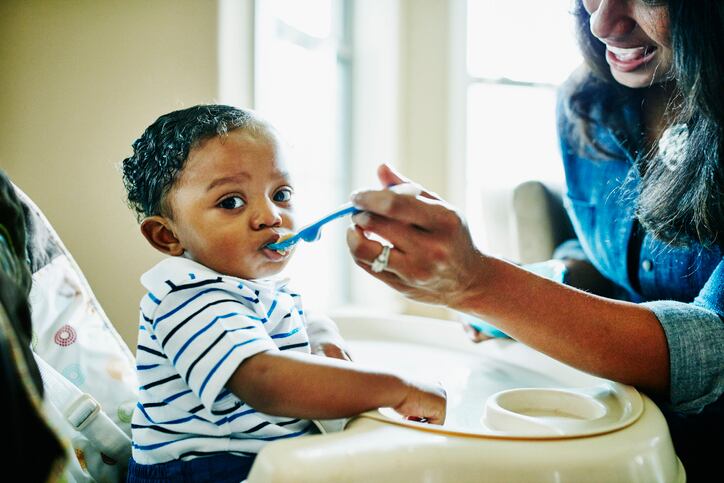“FDA does not need an identified action level to determine whether enforcement action is warranted. Irrespective of whether the agency has guidance on an action level for a particular contaminant, the agency considers on a case-by-case basis, whether a food that contains a chemical contaminant is adulterated,” Paul South, director of plant products and beverages at FDA’s office of Food Safety and Applied Nutrition, told stakeholders last week during a question and answer forum online about the agency’s draft guidance, Action Levels for Lead in Food Intended for Babies and Young Children.
The draft guidance published in January is part of FDA’s Closer to Zero Initiative launched in 2021, which includes establishing action levels for toxic elements in food intended for babies and young children that are based on evolving science on health impacts and mitigation techniques, and impact on industry on achievability.
South’s warning about enforcement action comes even as the agency is soliciting feedback about “all aspects” of the draft guidance for lead in children’s food through an open comment period set to close March 27, Conrad Choiniere, director of the Office of Analytics and Outreach at FDA, said during the forum.
“We are actively seeking information and data on all aspects of this issue, such as the levels of exposure from foods that have detrimental health effects, the level of contaminants in those foods, and the measures that growers can take to reduce … the presence of contaminants in their commodities and in their foods.
“We’re also interested in the role that nutrition and nutrients can play in mitigating the impact of exposure, particularly among the very young,” and “any information, comments and particularly data that you may have related to the actual levels that we have proposed and presented today, so that it can help us inform our decision-making as we move forward to finalizing action levels for lead in baby food,” he said.
According to the guidance, lead leaves should not exceed:
- 10 parts per billion for fruits, vegetables (excluding single-ingredient root vegetables), mixtures (including grain and meat-based mixtures), yogurt, custards/puddings and single-ingredient meats.
- 22 parts per billion for root vegetables (single ingredient).
- 20 parts per billion for dry cereals.
The agency also encourages manufacturers to share how long it may take them to reduce the levels of lead in their products as appropriate, said South, noting that once the guidance is finalized, the action levels in the draft guidance will reflect levels of lead at which FDA may regard food as adulterated.
He added even after the FDA issues final guidance on action levels, “we will periodically review existing guidance documents to determine whether they need to be changed or withdrawn … there is never a point in time that the action level limits that are set are set in stone.”
As such, he reiterated, each enforcement action will be on a case-by-case basis, which could include action before the guidance is finalized.
The timeline for finalizing the guidance will depend on both the volume and complexity of comments received, said South. “However,” he added, “advancing the guidance is an FDA priority.”
FDA’s enforcement and compliance strategy
If and when the guidance is finalized, industry can expect surveillance and enforcement action around lead in food for young children, said Choiniere.
“As we’ve outlined in the Closer to Zero Plan, we intend to do routine monitoring of levels of lead in food as part of our total diet study, which would help us assess the progress that we are making, but also as part of our compliance program,” he said.
In addition, the agency will conduct inspections, which could include specific evaluation of manufacturers’ supply chain controls, as well as assessing their preventive control plans to ensure they are “sufficiently committed to reducing the levels of these contaminants in their foods,” he said.
He added the agency does not intend to lay out specific sampling plans for compliance testing.
However, FDA has posted online at least one of the accurate lead quantification methods it uses, which may help manufacturers and suppliers as they develop and modify their food safety plans and practices as appropriate, said South.
Those changes may also include managing supply chain and supplier approval as “the availability of food safety information and testing results during the import process is always of assistance,” he added.
‘FDA will be assessing whether to propose action levels for additional foods’
While FDA’s proposed draft guidance for lead in baby and toddler food only applies to packaged food for children under two years old and does not include raw agricultural commodities, infant formula, snacks, meal products or beverages, the agency could expand or propose additional guidances that cover other products commonly consumed by children, Choiniere said.
“As we progress through our cycle of continual improvement, FDA will be assessing whether to propose action levels for additional foods, including those foods that are not quote intended for babies and young children, but yet are commonly consumed by those young children,” he said.
“We’re also evaluating to what extent, if any, infant formula contributes to dietary lead exposure among the very young,” he said.
Some products frequently consumed by young children will be addressed in separate guidance, such as juice, added South.
With that in mind, both officials reiterated that FDA’s approach to evaluating lead and other contaminants in baby and toddler food is a work in progress that will require ongoing input and engagement by stakeholders.




